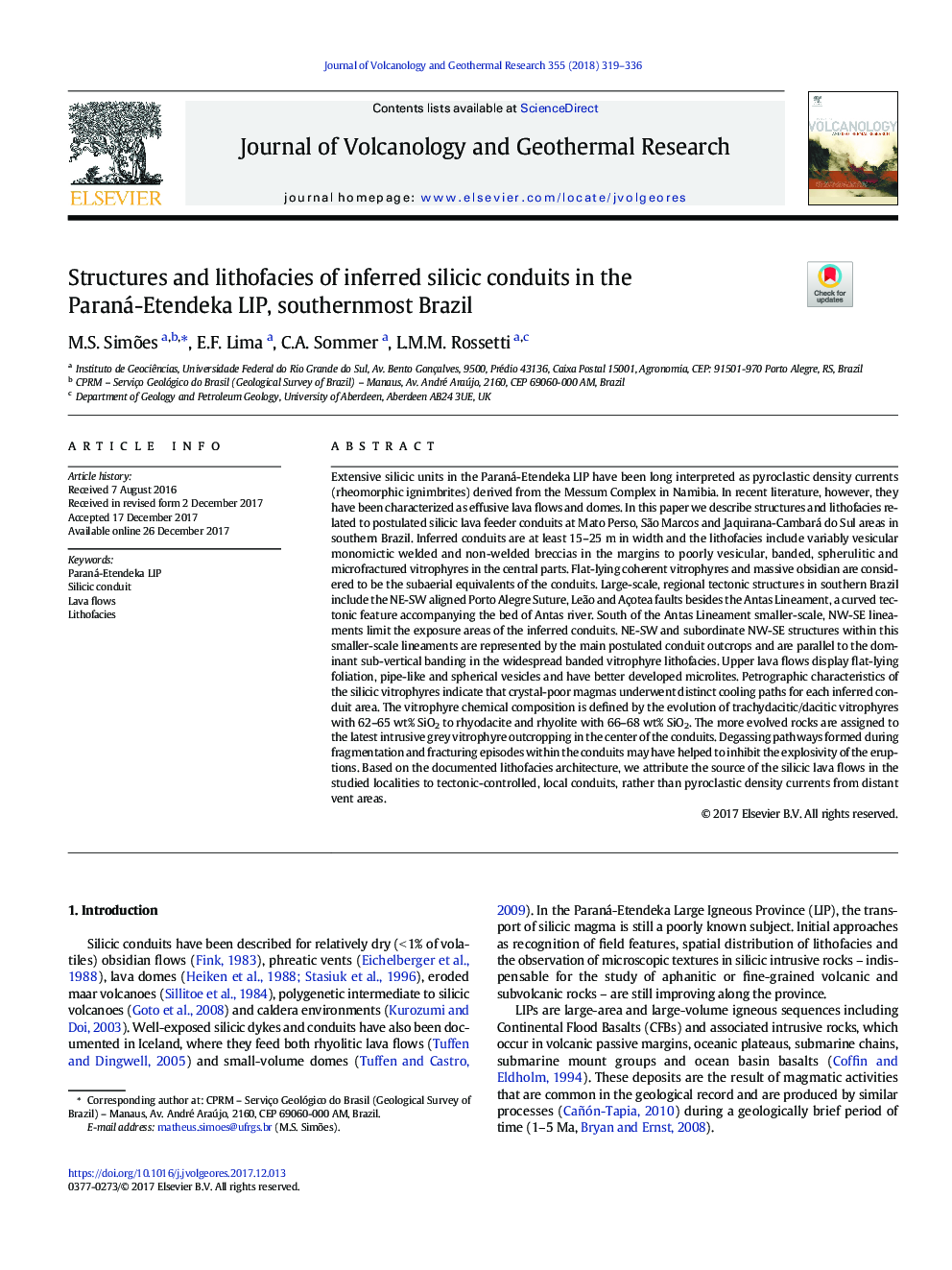| کد مقاله | کد نشریه | سال انتشار | مقاله انگلیسی | نسخه تمام متن |
|---|---|---|---|---|
| 8911352 | 1638268 | 2018 | 18 صفحه PDF | دانلود رایگان |
عنوان انگلیسی مقاله ISI
Structures and lithofacies of inferred silicic conduits in the Paraná-Etendeka LIP, southernmost Brazil
دانلود مقاله + سفارش ترجمه
دانلود مقاله ISI انگلیسی
رایگان برای ایرانیان
موضوعات مرتبط
مهندسی و علوم پایه
علوم زمین و سیارات
ژئوشیمی و پترولوژی
پیش نمایش صفحه اول مقاله

چکیده انگلیسی
Extensive silicic units in the Paraná-Etendeka LIP have been long interpreted as pyroclastic density currents (rheomorphic ignimbrites) derived from the Messum Complex in Namibia. In recent literature, however, they have been characterized as effusive lava flows and domes. In this paper we describe structures and lithofacies related to postulated silicic lava feeder conduits at Mato Perso, São Marcos and Jaquirana-Cambará do Sul areas in southern Brazil. Inferred conduits are at least 15-25 m in width and the lithofacies include variably vesicular monomictic welded and non-welded breccias in the margins to poorly vesicular, banded, spherulitic and microfractured vitrophyres in the central parts. Flat-lying coherent vitrophyres and massive obsidian are considered to be the subaerial equivalents of the conduits. Large-scale, regional tectonic structures in southern Brazil include the NE-SW aligned Porto Alegre Suture, Leão and Açotea faults besides the Antas Lineament, a curved tectonic feature accompanying the bed of Antas river. South of the Antas Lineament smaller-scale, NW-SE lineaments limit the exposure areas of the inferred conduits. NE-SW and subordinate NW-SE structures within this smaller-scale lineaments are represented by the main postulated conduit outcrops and are parallel to the dominant sub-vertical banding in the widespread banded vitrophyre lithofacies. Upper lava flows display flat-lying foliation, pipe-like and spherical vesicles and have better developed microlites. Petrographic characteristics of the silicic vitrophyres indicate that crystal-poor magmas underwent distinct cooling paths for each inferred conduit area. The vitrophyre chemical composition is defined by the evolution of trachydacitic/dacitic vitrophyres with 62-65 wt% SiO2 to rhyodacite and rhyolite with 66-68 wt% SiO2. The more evolved rocks are assigned to the latest intrusive grey vitrophyre outcropping in the center of the conduits. Degassing pathways formed during fragmentation and fracturing episodes within the conduits may have helped to inhibit the explosivity of the eruptions. Based on the documented lithofacies architecture, we attribute the source of the silicic lava flows in the studied localities to tectonic-controlled, local conduits, rather than pyroclastic density currents from distant vent areas.
ناشر
Database: Elsevier - ScienceDirect (ساینس دایرکت)
Journal: Journal of Volcanology and Geothermal Research - Volume 355, 15 April 2018, Pages 319-336
Journal: Journal of Volcanology and Geothermal Research - Volume 355, 15 April 2018, Pages 319-336
نویسندگان
M.S. Simões, E.F. Lima, C.A. Sommer, L.M.M. Rossetti,